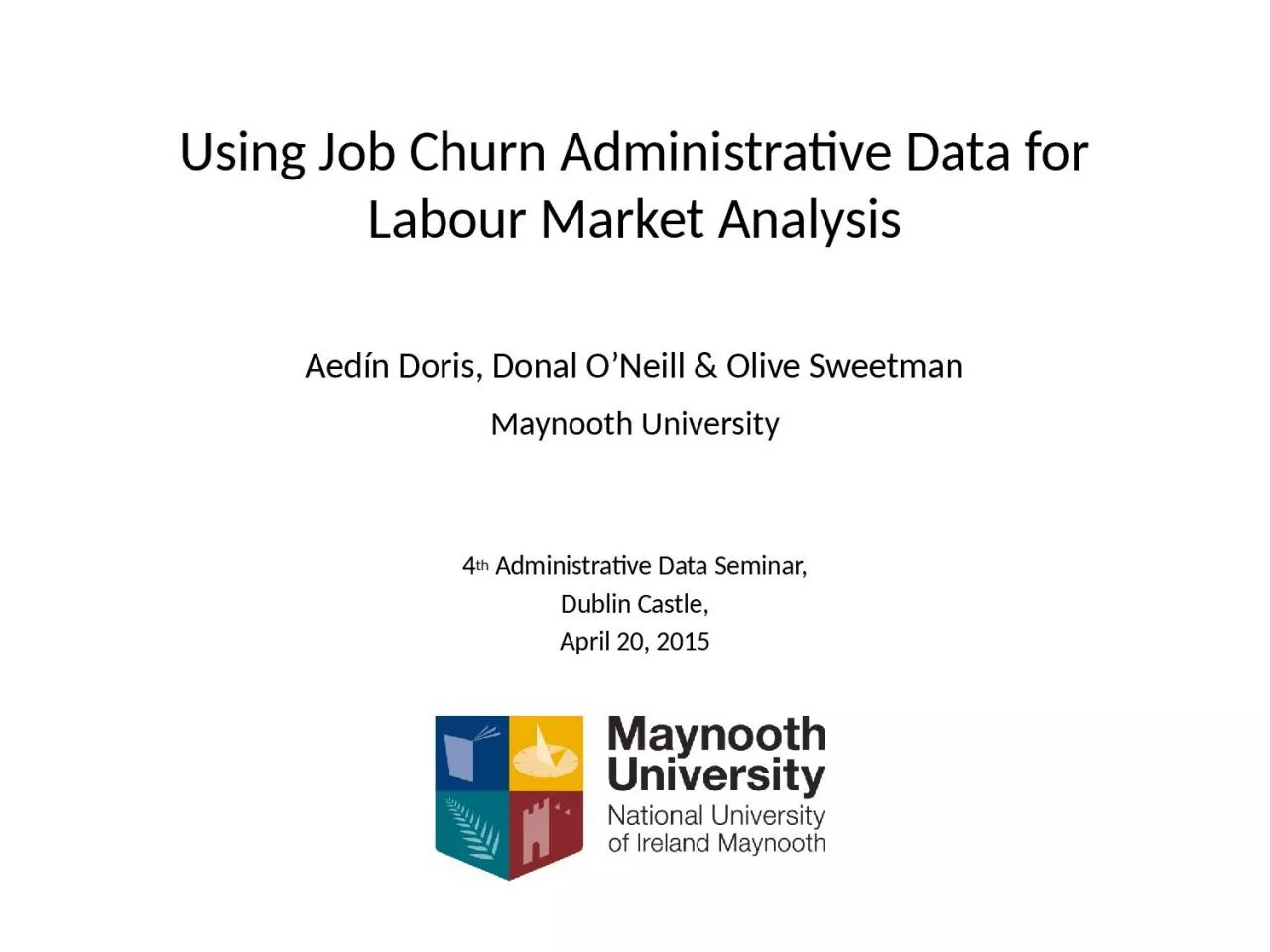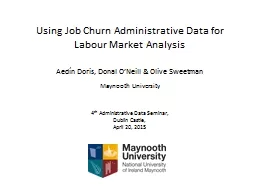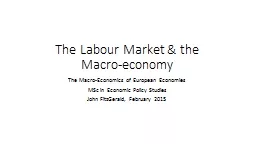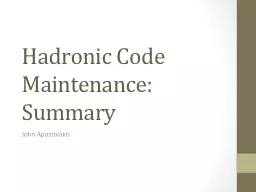PPT-Using Job Churn Administrative Data for Labour Market Analysis
Author : helene | Published Date : 2023-11-04
Aedín Doris Donal ONeill amp Olive Sweetman Maynooth University 4 th Administrative Data Seminar Dublin Castle April 20 2015 Our Questions How have wages in Ireland
Presentation Embed Code
Download Presentation
Download Presentation The PPT/PDF document "Using Job Churn Administrative Data for ..." is the property of its rightful owner. Permission is granted to download and print the materials on this website for personal, non-commercial use only, and to display it on your personal computer provided you do not modify the materials and that you retain all copyright notices contained in the materials. By downloading content from our website, you accept the terms of this agreement.
Using Job Churn Administrative Data for Labour Market Analysis: Transcript
Download Rules Of Document
"Using Job Churn Administrative Data for Labour Market Analysis"The content belongs to its owner. You may download and print it for personal use, without modification, and keep all copyright notices. By downloading, you agree to these terms.
Related Documents














